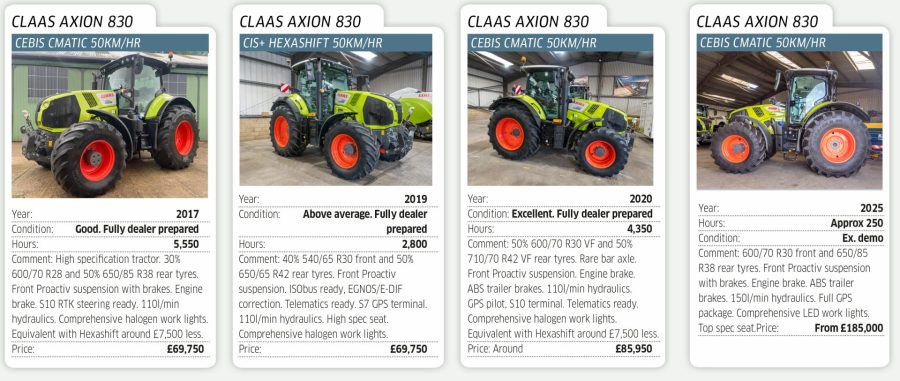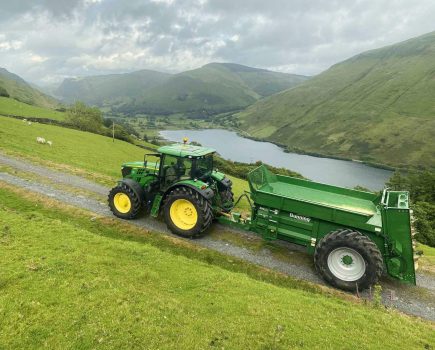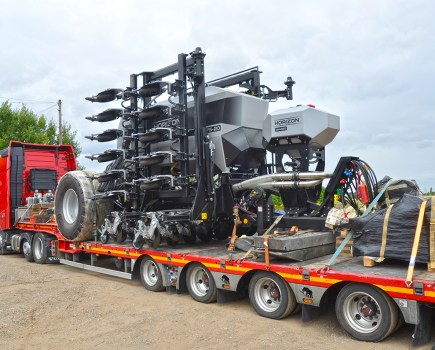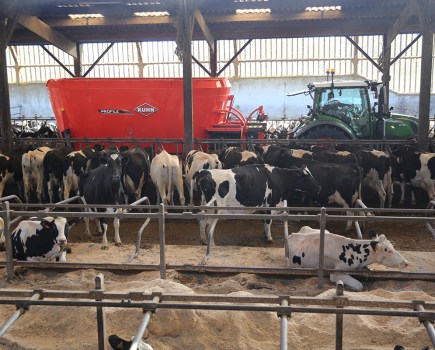Claas launched its ‘second generation’ Axion 800 tractors back in 2014, with the oldest examples now past their tenth birthday. This means there should be a used example available to suit a range of budgets, but you do need to do a bit of homework to secure the right buy.
When discussing used ‘first generation’ Axion 800 tractors back in 2014, it would be fair to say we found used models could be more ‘affordable’, pro-rata, than competitive alternatives. Does this apply a decade on to second gen Axion 800 tractors? Bad news used buyers. Axion 800 Stage IV and Stage V models command stronger money.
This is partly due to new tractor prices, but these second generation FTP engine Axion 800 tractors have earned their spurs in the market, with a proven dependability record. Where problems with these tractors have arisen, (there doesn’t seem to a general big expense problem area), Claas dealers have typically been quick to resolve them, the factory also having made detail changes to resolve any recurrent troubles.
Users suggest Axion 800 tractors are solid performers too, with decent fuel economy across the range. Add that these tractors are increasingly purchased new with a Claas five-year Maxicare maintenance and warranty package and this solid record of past care further enhances used values. A final point is the specification of the tractor, an increasing number of models coming with the top-spec Cebis package. Entry level CIS models will be a rare used find.
A few outline spec pointers for those less familiar with Claas tractors can include:
- CIS, CIS+ and Cebis specification packages.
- GIMA sourced Hexashift , with six speeds in four ranges to give 24/24 forward and reverse speeds with Hexactiv automated shifting. No longer offered from 2025.
- CMatic transmission based around ZF Terramatic stepless transmission hardware with Claas software.
- From 2017, Carraro front axle with suspended Proactiv self-levelling option.
- Three-speed pto with 540/1000/1000E default but 540/540E/1000 and two speed 540/1000 available.
- Integrated front linkage with front pto a common option.
Initial second generation Axion 800 Stage IV and current Stage V emission compliant models from 2021 do have standard spec differences but expect a late Stage IV and early Stage V of similar hours and spec to be retailed at much the same money. The key is to consider actual specification, tractor condition and the fitted tyres.
With reference to hours, the mechanical elements of all models are not known for any major problems but as is always the case a great deal will depend upon how the tractor has been looked after. A dealer prepared and serviced used buy should be a safe bet, with many users having taken out the previously mentioned Claas five-year Maxicare package. This would have helped ensure any problems that did arise would have been dealt with.
All good then? Broadly speaking yes. A gen two Stage IV or V Axion 800 of any spec and power package can make a sound used buy. The caveat is you will need to ensure the tractor has been looked after.
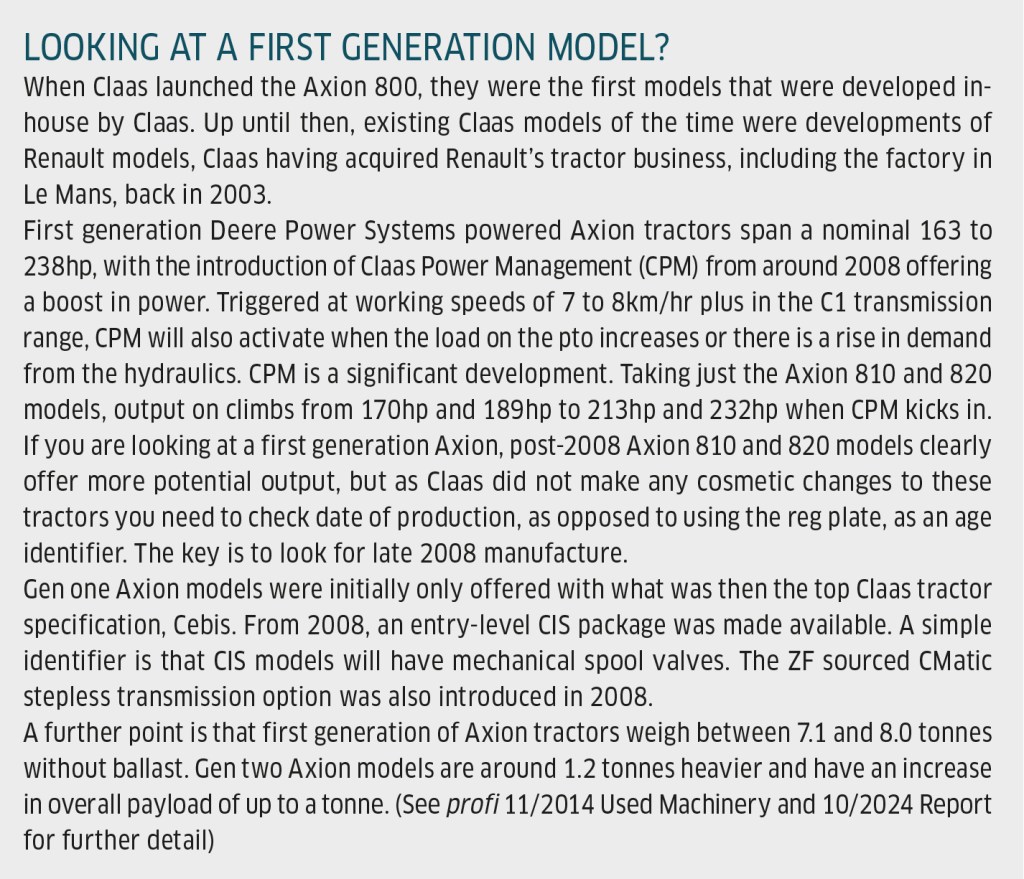
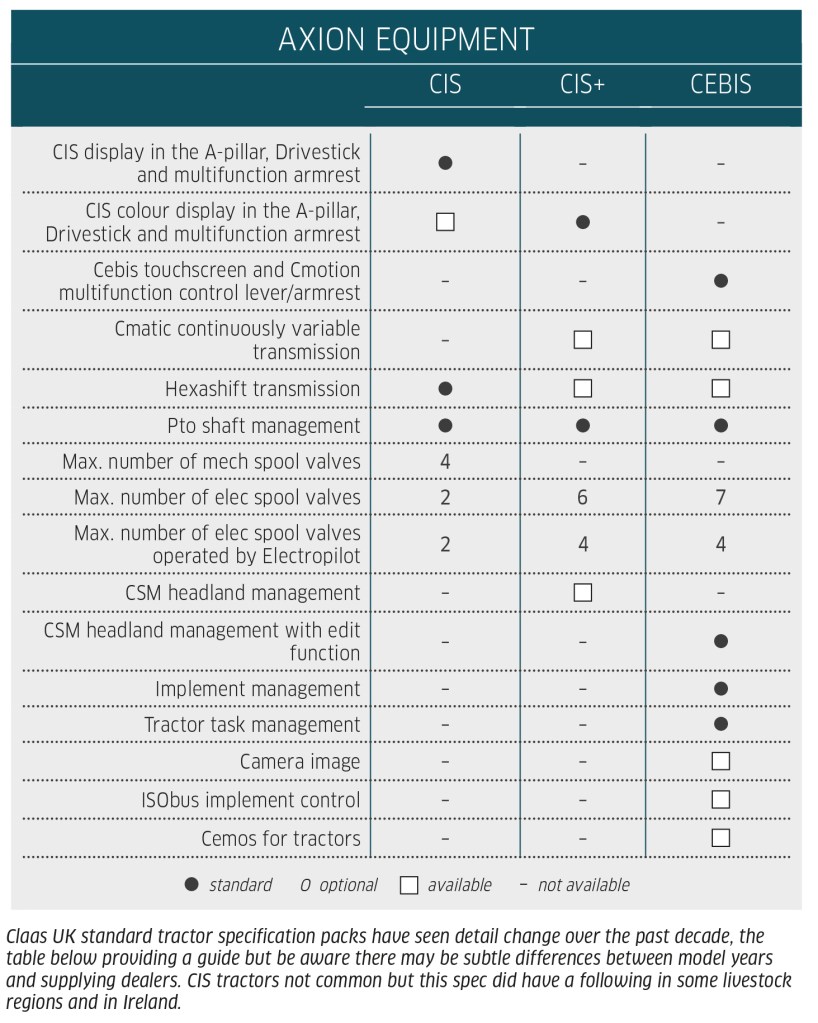
Before you start looking
Clearly you will need to establish which model offers the power you need. Stage IV 225hp Axion 830 and 250hp Axion 850 are key used models, the 270hp Axion 870 taking over from the latter as a top seller from its launch in 2016. Stage IV Axion 830 with CIS+ spec and a Hexashift transmission proved popular, the Axion 850 and 870 coming in top spec Cebis with CMatic CVT on the latter. CMatic will be a common find on 830 models, incidentally, with it becoming the default Axion transmission choice before becoming the standard fit from this year.
Hexashift remains a good used choice. If you are moving from a gen one Deere engined tractor you will note how the Hexactiv shift pattern in auto has been tweaked to match the higher torque developed by the FPT engine. The oily bits of this GIMA sourced transmissions are well-proven and affordably fixable if something does go wrong but more on that in the ‘see what to look for’ section.
The top Cebis specification is now available with Cemos interactive learning, as seen on Claas combines (see separate panel on page 57).
NOTE: Gen one DPS powered tractors are fitted with a Dana front axle that even in suspended form did not come with hub brakes. From 2017, Stage IV and Stage V Axion will have a Carraro front axle with suspension and integral hub brakes available.
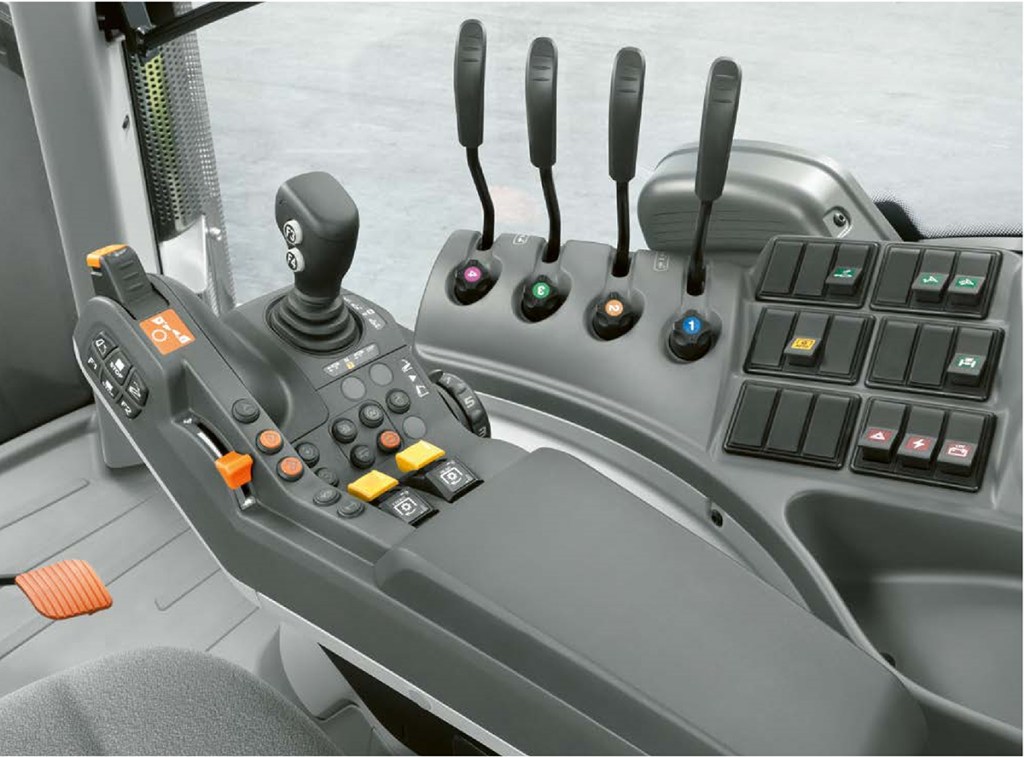
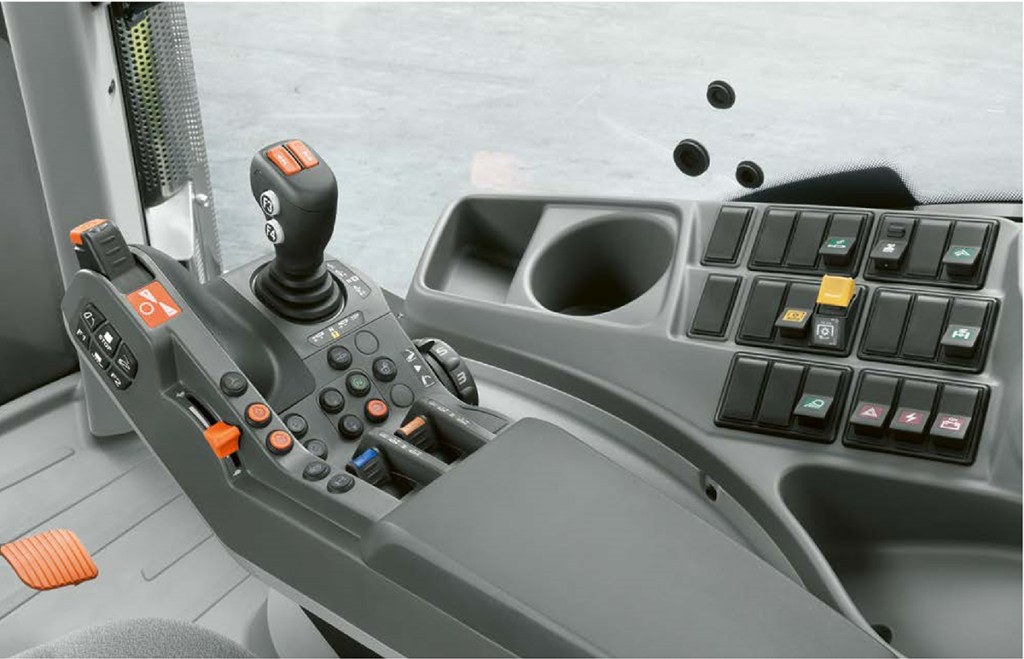
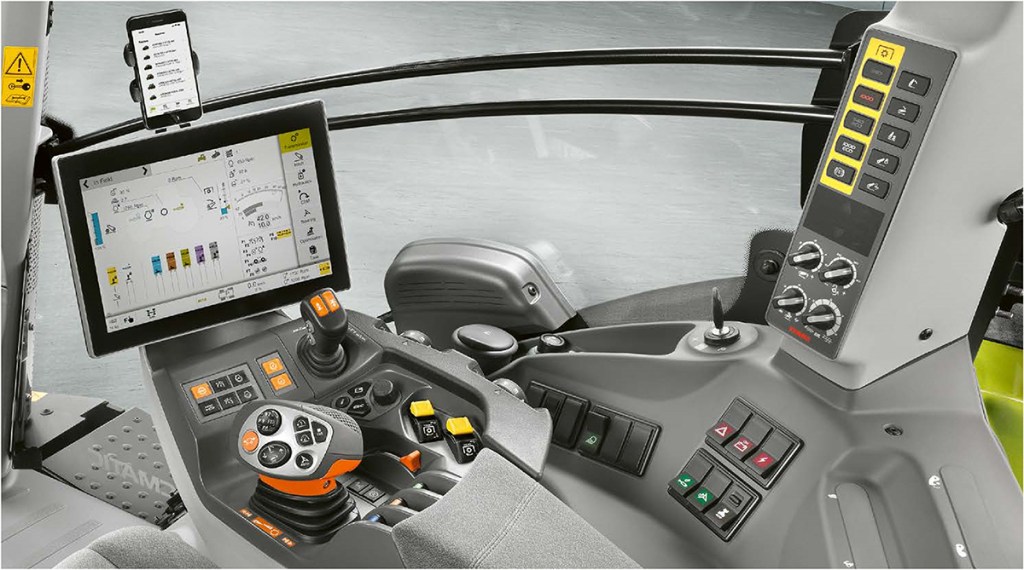
Stage IV and Stage V Axion 800 used buying checks
Working back, the front linkage bolts onto the Claas specific structural sump of the engine. If a used buy is not fitted with a front pto, one can be easily retrofitted for around £5-6K, as can front valves. The latter are plumbed into the back of the rear valve blocks. The front pto clutch packs on pre-2019 models can engage abruptly, a revised seven-plate system offering improved modulation, but this cannot be retrofitted. Check the pto switch. Some fail.
The black radiator grills are known to fade to grey and they can also rust, with the bonnet paint also liable to dulling. These cosmetics are easily resolved by repainting the grills and giving the bonnet a polish. Dealer prepared tractors will typically present in good cosmetic order.
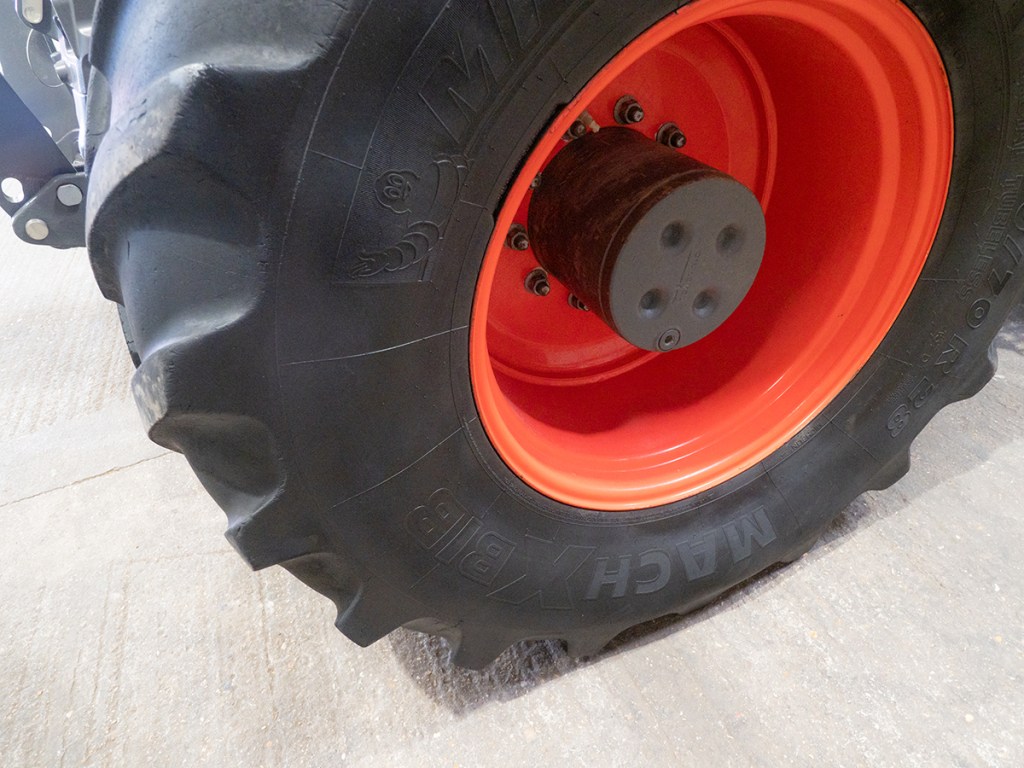
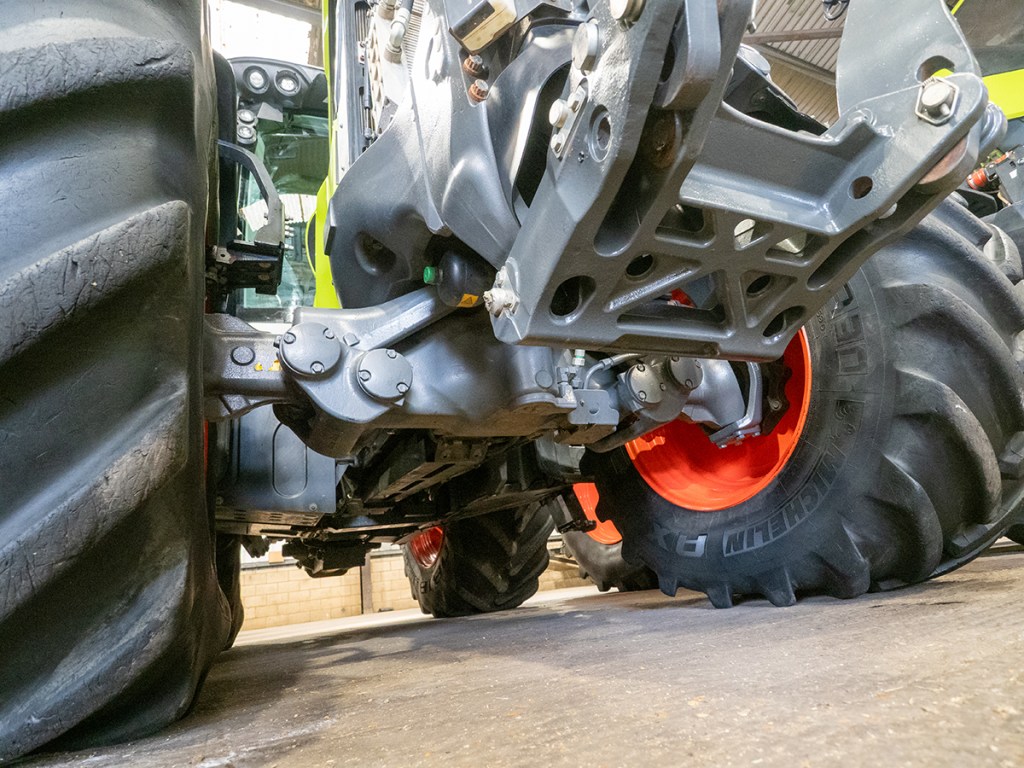
Suspended Dana and Carraro front axles are of different designs, the latter coming with front hub brakes as an option. 50km/hr tractors will have larger rear axle brake packs with high pressure boost and trailer air brakes as standard but not necessarily front axle brakes so check. Also check permissible gross weights as these will vary according to the front axle fitted. Front axles are not known for problems, but a blocked breather can cause oil to weep from the seals.
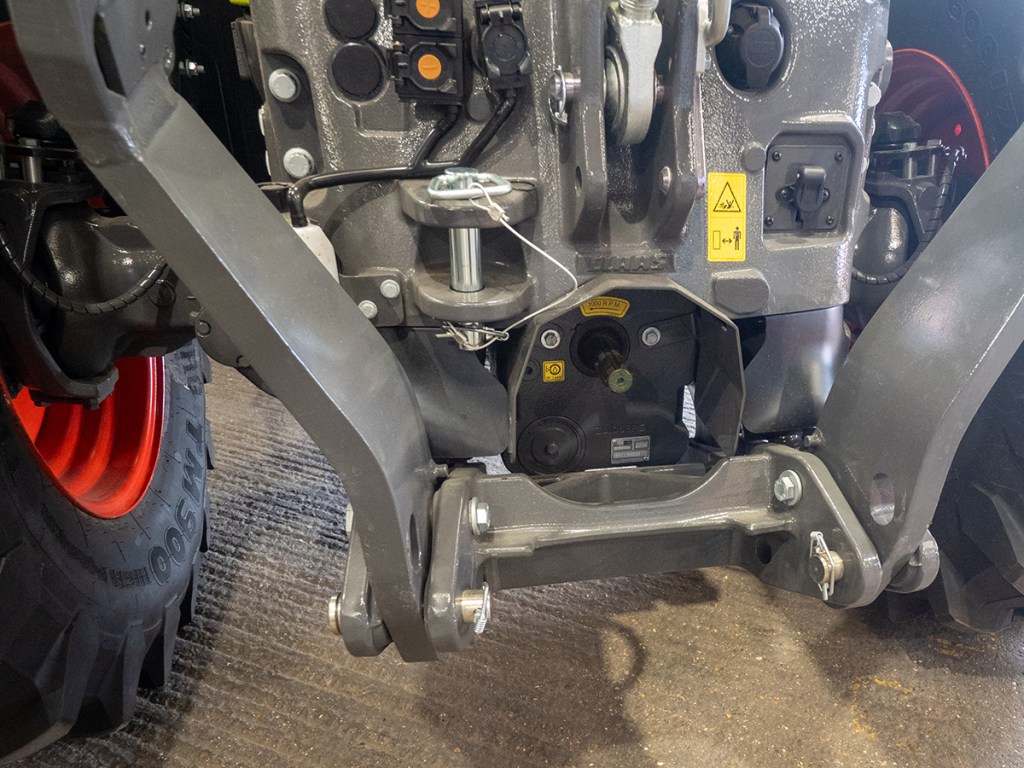
Engine
There are no specific problem areas regarding the FPT engine but still look for evidence of fluid leaks. Earlier models could see the coolant header tank crack, which should have been resolved under warranty, and the flexible U-bend at the base of the exhaust could also fracture, again fixed under warranty. AdBlue indicator alerts can arise if there is a leak in the system with fluid crystalising around the base of the exhaust. Easy to check. The after-treatment sensor can also fail but this is a simple replacement job.
Early tractors could suffer from the SCR catalyst failing, leading to high Ad Blue consumption. Claas came up with a fix, with any catalyst that failed out of warranty having a repair cost contribution related to age and engine hours. This should not be a problem but if you are looking at an older, high hour tractor find out if the system has been worked upon.
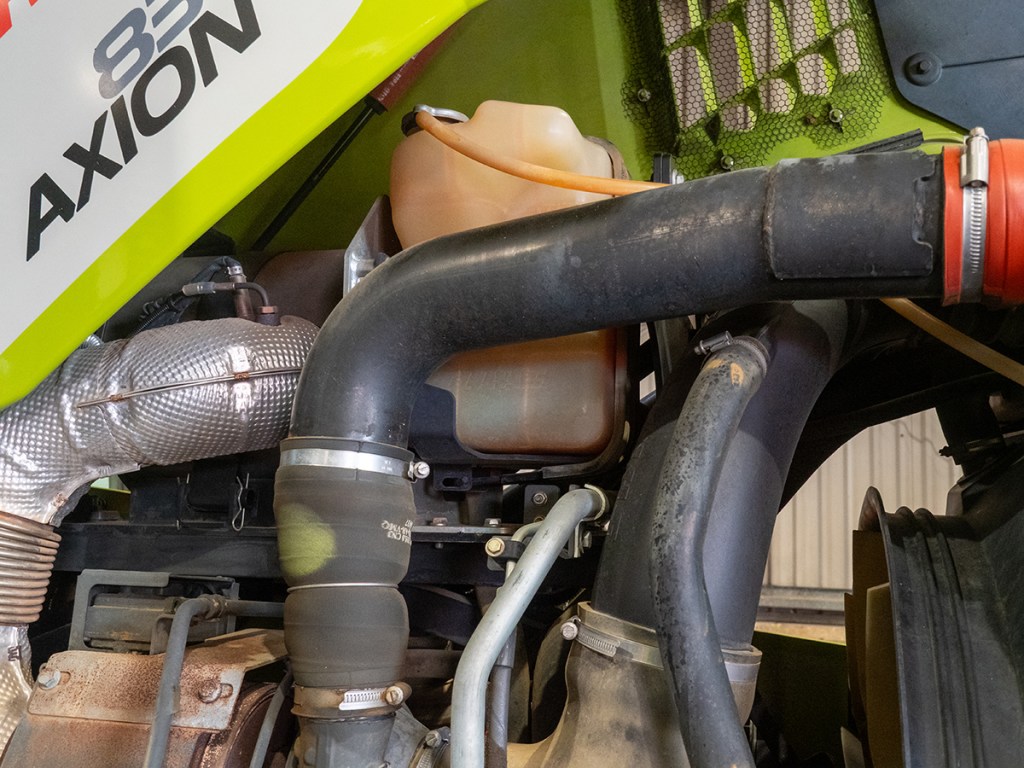
The coolant package opens out for cleaning, making this easy to look over. The air filter housing on early tractors could have poor sealing that allowed moisture to get in and wet the filter. This could then lead to the filter element becoming liable to clogging. Not common but a revised seal resolved damp filter clogs.
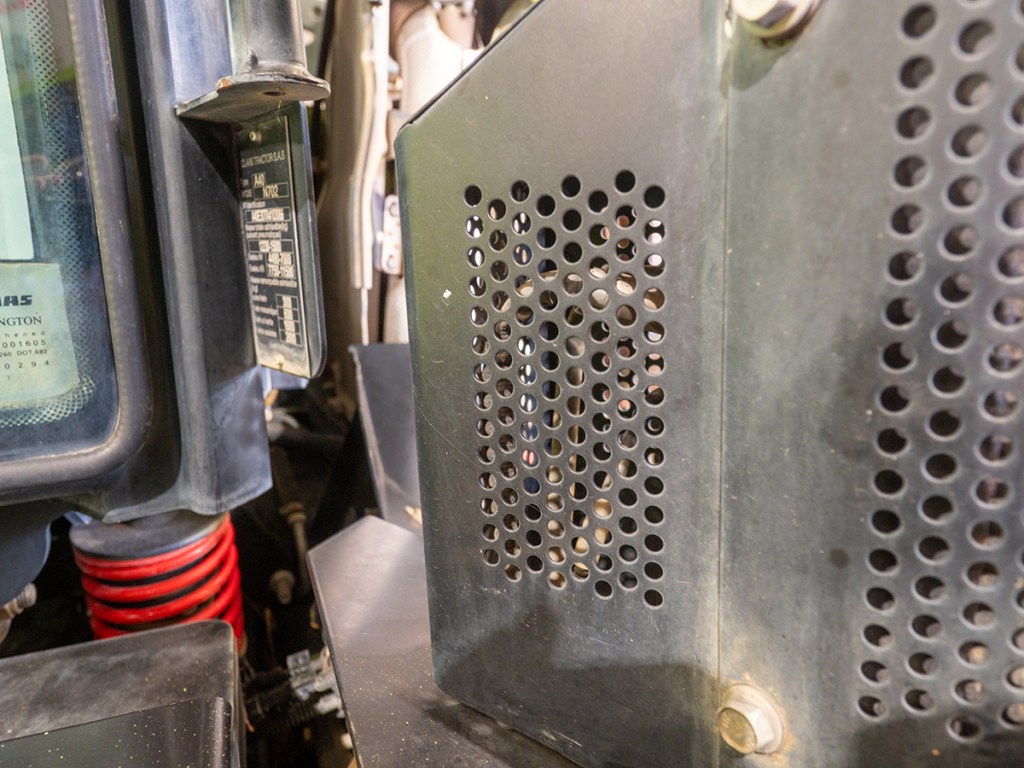

Transmission
With Hexashift transmission tractors, check the tractor does not ‘creep’ when swapping between forward and reverse at idling speed. If it does the shuttle clutch pack may need to be changed. The latter was upgraded to resolve earlier failures and is less liable to occur until the tractor has some serious hours on the clock.
A harsh shift between ranges can typically be resolved by re-calibrating the transmission. This is not difficult but will need talking through with a dealer for a user to resolve on farm.
NOTE: Never attempt Hexashift recalibration in a confined space. The tractor may jerk forward or back.
A more common problem on high hour Hexashift tractors is a failure of the shaft related to the C range. A fix is relatively straightforward, Claas introducing a revised shaft with a heavier bearing to prevent future failure. Not all tractors will have had any problem and later models should be fine but still check.
Cmatic CVT transmissions are not known for any mechanical related issues.

Cab
Cab door hinge wear can see the door sag and hit the rear mudguard. If the paint is scuffed on the latter, the hinge bushes will need renewing if they have not been replaced. Always check the seat suspension system, the type of seat fitted varying enough to make suggesting what type will be fitted difficult. Users rate the Grammer Evo highly.
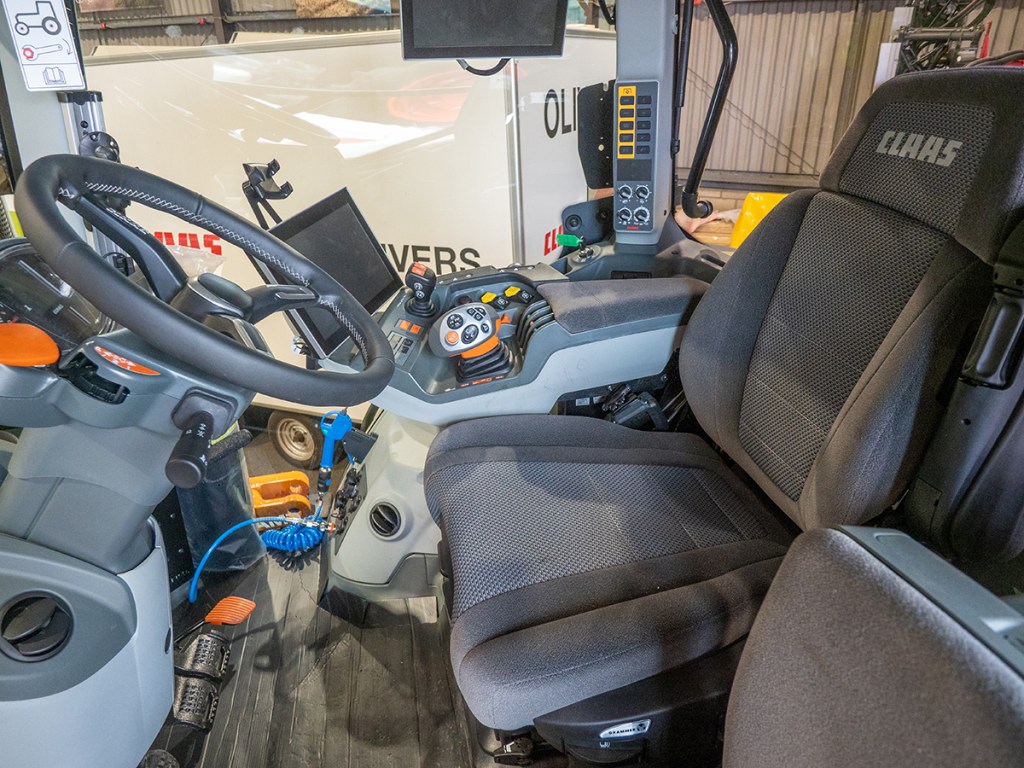
Four-point cab suspension is standard, this having three ‘comfort’ settings of essentially hard, medium or soft. Although the setting can be altered most will not bother as adjustment will typically need the nearside rear wheel removing and unbolting the connection between a torsion bar and cab mount. Gen two tractor cab suspension is less liable to bush wear than earlier Axion 800 models but still listen out for clonks from under the cab on a test drive. If the cab feels prone to rolling it could be the suspension setting is at its softest and not that there is a problem.
Cebis spec tractors from 2017 have a 12-inch touch display that looks like the previous button controlled example. Some of the first touch units could suffer from moisture getting into the display but this was resolved under warranty.
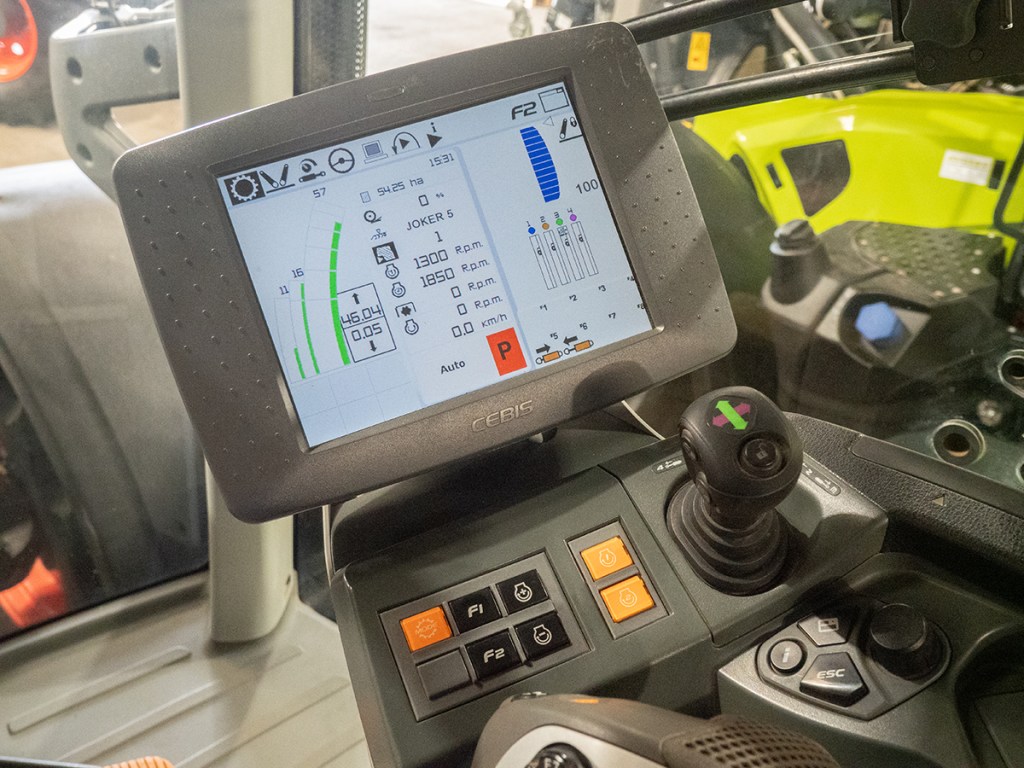
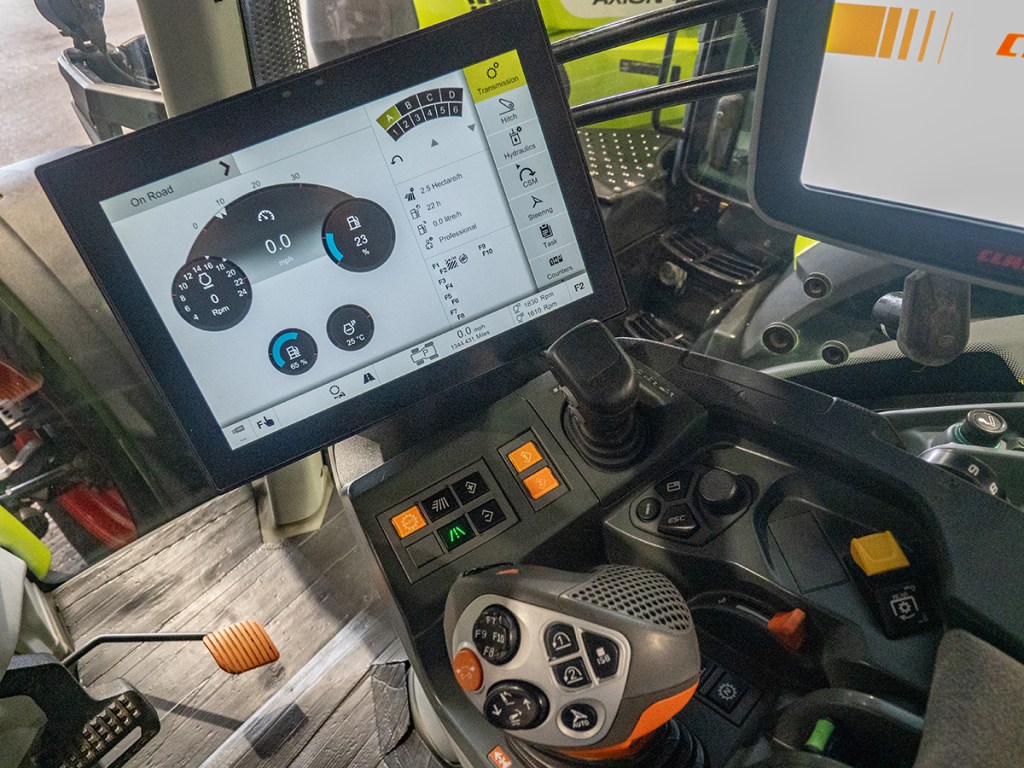
The parking brake solenoid can fail. This is typically caused by dirt build up under the cab fouling the brake cable that then seizes. Check the brake works and that the park lock on the shuttle moves freely.
The black paint on the cab steps and tinware can fade and if scratched corrosion will set in, spoiling the cosmetics. Claas dealers will typically sort out problems in this area but look for this if buying elsewhere. The nearside steps can seize in place making it difficult to access the battery and the step latch can also fail. On the nearside, the toolbox slide-out runners can also seize.

Hydraulics
Claas fit pressure release levers as standard to the rear valves, with good service access. The oil collector bottles attached to the valves will fill quickly if the valve ‘O’ ring seals have failed, a modification with an extra back up ring typically solving leaky items.
The hydraulic oil sight glass on the rear axles should read above minimum when the tractor is cold. If the oil looks dirty check when it was last changed as the service interval of 1,200 hours is generous enough to suggest a missed change is a sign of poor past care.
Automatic rear stabilisers are fitted to both lower links. Look over the entire hitch for wear and make sure hitch balls are supplied with the tractor and that the latches are in good working order. Easy to overlook.
The push-back Dromone pick-up hitch will also need looking over for wear, with particular attention paid to the towing hook.
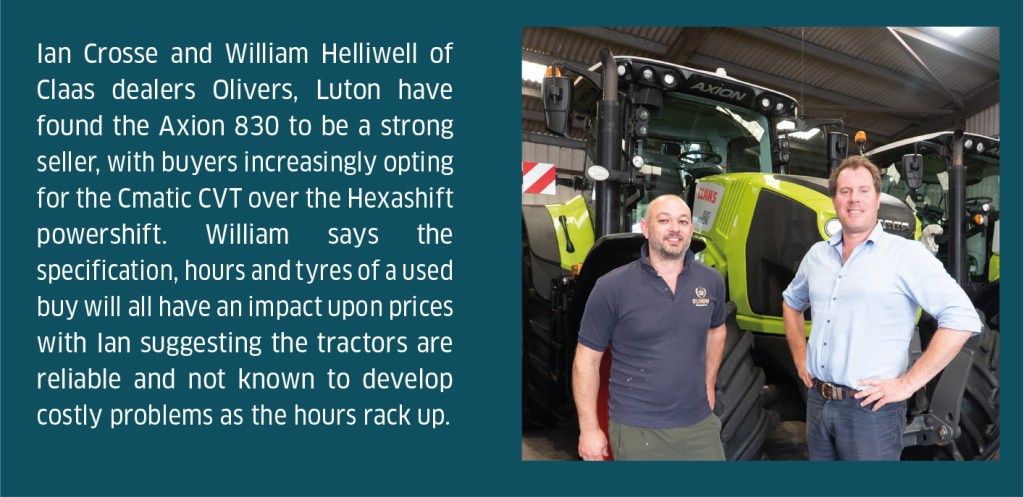

CIS VERSUS CIS+
CIS Axion tractors with mechanical spool valves and a reduced standard specification were intended to offer a lower cost entry point into the Axion 800 series but with second generation tractors this did not prove popular. CIS+ from 2017 subsequently proved a more popular ‘mid-spec’ alternative. A Drivestick is used to operate the Hexashift or CMatic CVT transmission, with an Electropilot four-way lever with integral direction change and an A-pillar mounted 7-inch CIS colour display for viewing and configuring all the main machine functions.
CMatic transmission tractors with CIS+ with the armrest mounted Drivestick to be used to deliver proportional control of acceleration and deceleration. Alternatively, accelerator pedal mode can be selected, with the Drivestick used to manually intensify or reduce the engine braking effect. A cruise control button allows the selected forward speed to be saved.
CIS+ models with the Hexashift transmission feature a Smart Stop and cruise control, with the CIS+ Electropliot four-way control lever incorporating a forward and reverse shuttle.
CIS+ electronic spool valves feature flow rate and time control for individual valves, with up to four automated sequences recordable within the headland management system. CIS+ tractors can have up to six spool valves.
ISObus is standard on all CIS+ on tractors, with compatibility with Claas telematics.
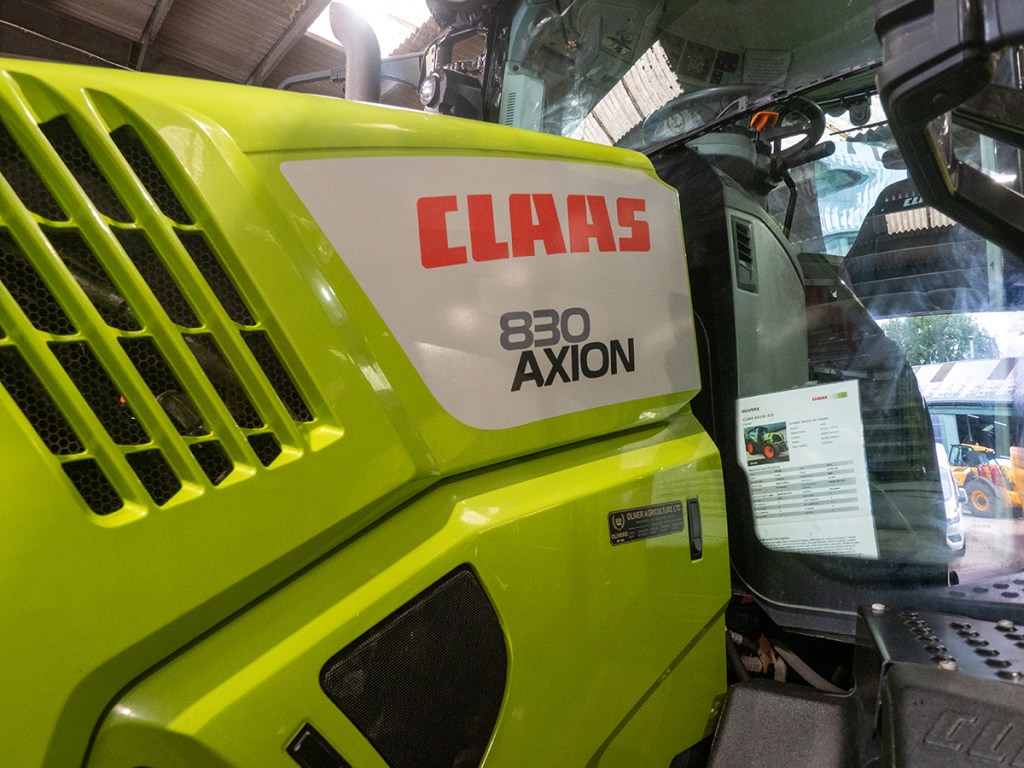
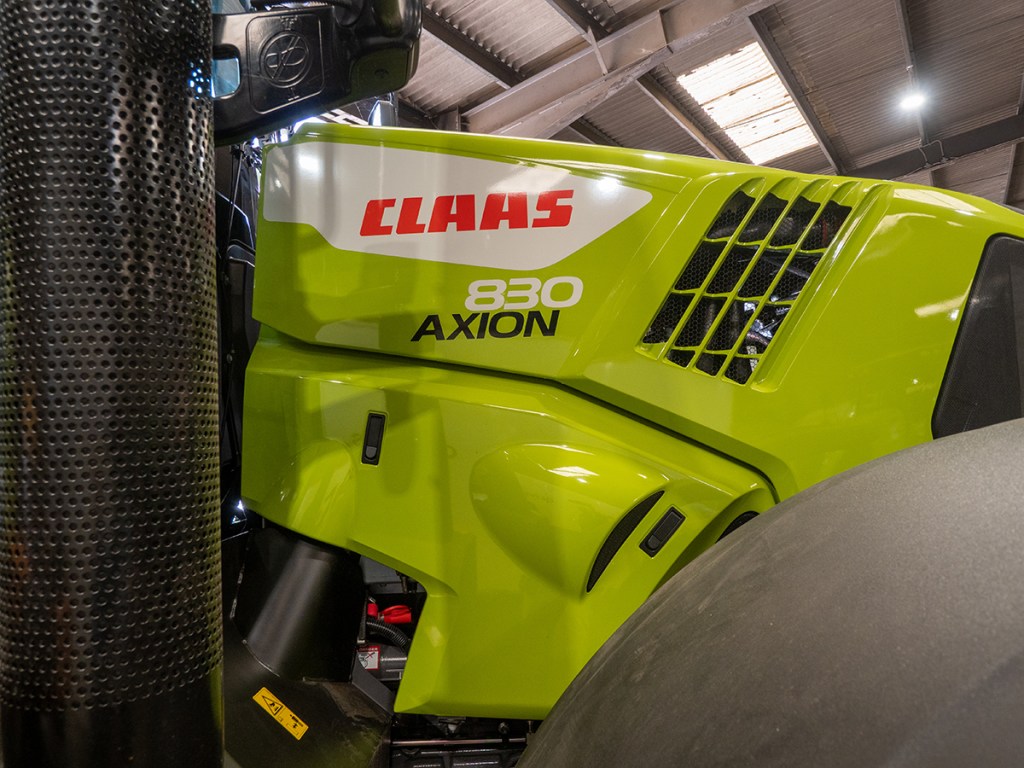
Summary
Although used buyers may find alternative models, the Axion 830 will be the most abundant used find, the later the tractor the more likely it is to be fitted with a Cmatic CVT. Entry-level CIS spec tractors will be harder to find, CIS+ and Cebis specs both more common. Axion 850 models sold well until the advent of the Axion 870. These more powerful variants with their high standard specification were costly when new on paper but less so when all the features on offer are factored in. 850 and 870 models can make a sound used buy, the latter offering a good power to weight ratio.
Finding used examples of the latter has been difficult but will improve as more of these models reach their fifth birthday.
As to prices, Claas dealers will sell 2017 Axion 830 Hexashift CIS+ models for upwards of £60K with around 5,000 hours on the clock, Cmatic transmission tractors carrying a premium of £7,500 plus. Tyre condition plays a big part of used tractor pricing, so do not just assume a higher priced tractor is in better shape or has lower hours. Axion 850 tractors will start at over £70K but expect prices in the region of £80K plus for lower hour 2019 models, low hour examples commanding £95,000 plus.
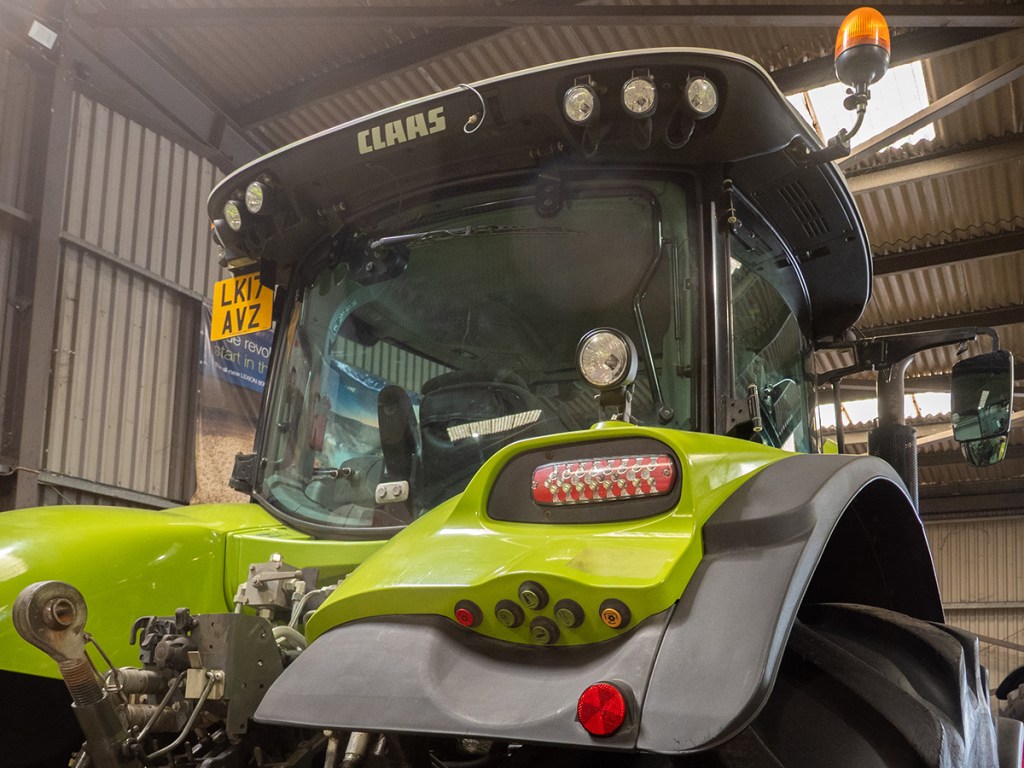


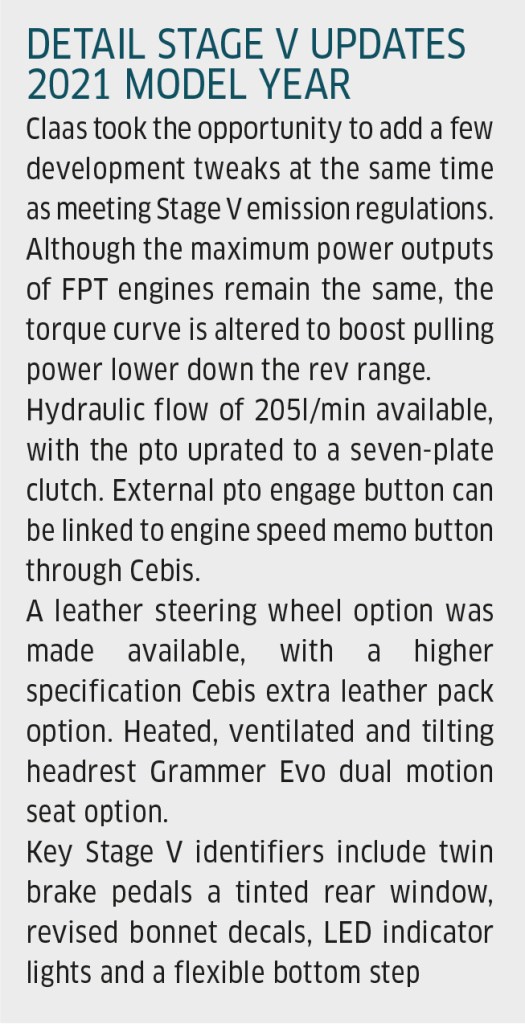



James de Havilland
For more up-to-date farming news click here and subscribe now to profi and save.

